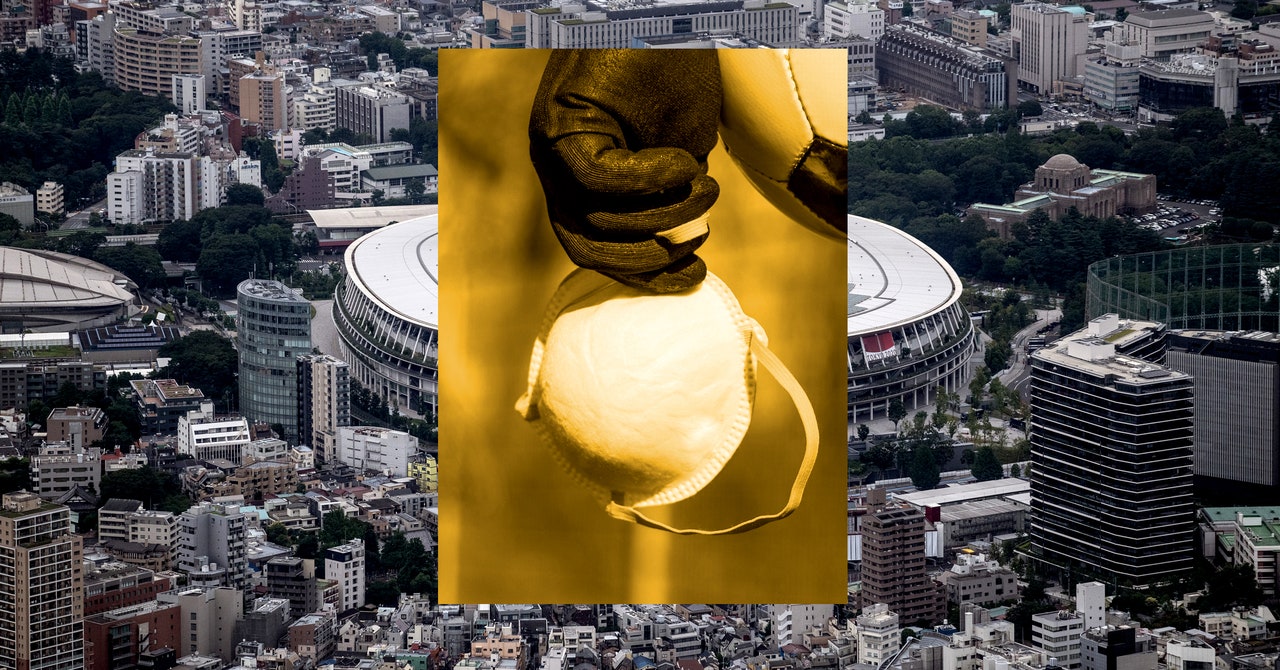
As for the Olympic-bound folks already testing positive, McCloskey said that didn’t constitute a failure in the system. Quite the opposite—each one represented the cutting-off of a more infectious timeline that might have been. “What we’re seeing is what we expected to see, essentially,” McCloskey told reporters in Tokyo at a press conference on July 19, a week before the opening ceremony. “If I thought all the tests we did would be negative, I wouldn’t be bothering to do the tests.”
Hey, 91 positive cases out of roughly 15,000 competitors and tens of thousands of reporters and other Olympic workers ain’t bad, right? For a few disease experts and athlete advocates, the answer is: That is, in fact, pretty bad—because of what it says about the preparations, and what might happen next.
At least, that’s what some scientists and experts have been saying. Hitoshi Oshitani, the virologist who devised Japan’s anti-Covid strategy, told The Times of London that he didn’t think it was possible to have a safe Olympics. “There are a number of countries that do not have many cases, and a number that don’t have any variants,” Oshitani told The Times. “We should not make the Olympics [an occasion] to spread the virus to these countries. There is not much risk to the US and UK, where people are vaccinated. But most countries in the world don’t have the vaccine.”
McCloskey estimates about 85 percent of people coming to Tokyo will be vaccinated. But only about 22 percent of Japanese people are. That’s among the lowest rates of all wealthy countries. Combined with Japan’s relatively low case count, that means most of the population doesn’t yet have antibodies to the virus. They’re what epidemiologists call “naive.” Which means Japan might be, as the cliché goes, a victim of its own success. “Clearly there is a high value being placed on holding these Olympics,” says Samuel Scarpino, managing director for pathogen surveillance at the Rockefeller Foundation’s Pandemic Prevention Institute. “Because certainly it’s risky to bring people together in a congregate setting inside a country with essentially no vaccination and essentially no existing immunity in the population.”
Covid-19’s asymptomatic, airborne spread means that testing has to be extremely frequent, at least once a day, to catch cases before they infect others. The strict, successful disease control measures of the US National Football League and National Basketball Association for example, used all the typical hygiene and distancing measures, plus a hardcore test-trace-isolate regimen. The NFL performed daily reverse-transcription PCR tests and gave players and staff single-purpose electronic devices that registered close contacts; a cumulative 15 minutes or more counted as a higher risk. Over time, the NFL supplemented the electronics with intense in-person interviews to determine the nature of those contacts. (Masked? Indoors? While eating?) “What the NBA did—or women’s basketball, which I advised last year—was to design and pull off a bubble. Once you’re in it, you’re not out,” says Annie Sparrow, a population health science and policy professor at Mt. Sinai Medical School. “There’s no way you can ever create a bubble at the Olympics. It just cannot be done at this scale.”
In early July, Sparrow and a bunch of other US researchers published a commentary in The New England Journal of Medicine expressing many of the same concerns Oshitani did. They went further, warning that the strategy McCloskey’s group had come up with was based on outdated information about the dynamics of the virus.
That article, in turn, echoed criticisms leveled by the World Players Association, an international group that works with athletes’ unions around the world. The WPA has argued—to little effect, having gotten no response from the IOC—that the rules consider contact on, say, the rugby pitch to be the same as contact in individual gymnastics or running track outdoors. WPA representatives criticized the shared-room situation and advice from the playbooks about opening windows once in a while for ventilation, something that might actually be impractical in Tokyo’s extreme summer heat. Also bad in the plan: allowing different kinds of masks and personal protective equipment, using phone apps for contact tracing instead of dedicated tech, and a lineup of other less-than-stellar interventions that the WPA reps said were just asking for trouble. “There’s never going to be zero risk when it comes to Covid, but there certainly could have been more mitigation put in place,” says Matthew Graham, director of legal and player relations at the WPA. “We, like the athletes we represent, hope this can be done safely, but no expense should have been spared for that.”


